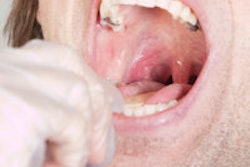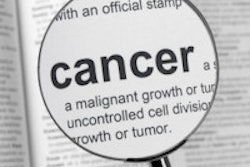
The dental community is up in arms over a recent Consumer Reports article that claims oral cancer screening is one of several medical tests that are overrecommended and unnecessary for all but high-risk patients.
The article, which appears in the March 2013 issue, concluded that "most people shouldn't waste their time" on most diagnostic tests, including chairside visual screenings for oral cancer.
"Most people don't need the test unless they are at high risk, because the cancer is relatively uncommon," Consumer Reports wrote.
But the ADA and the Oral Cancer Foundation vehemently disagree with the magazine's conclusions, asserting that visual screening can result in earlier diagnosis of oral cancer and other oral diseases.
The Consumer Reports article recommends only three cancer tests -- cervical, colon, and breast -- as worthwhile, and includes oral cancer screening among "eight to avoid" tests: ovarian, pancreatic, testicular, prostate, bladder, lung, oral cavity, and skin cancer.
The magazine said its ratings were based mainly on reviews from the U.S. Preventive Services Task Force.
Early diagnosis critical
According to Consumer Reports, the medical community has "systematically exaggerated" the benefits of screening while downplaying the harms, such as unnecessary radiation and biopsies.
The ADA quickly registered its disappointment with the recommendations and sent a letter -- co-signed by the American Academy of Oral & Maxillofacial Pathology -- to the editors of Consumer Reports, noting that noninvasive visual and tactile oral cancer screenings are typically included in oral exams and can result in earlier diagnosis of oral cancer and other oral diseases.
“It isn't an invasive exam, there's no radiation, ... it's usually free, and you're already sitting in the dentist chair. Why would you not get it?”
Brian Hill, executive director of the Oral Cancer Foundation who had stage IV bilateral cervical lymph node metastases when his oropharyngeal cancer was discovered, also took issue with the magazine's recommendations.
"I disagree categorically," he told DrBicuspid.com. "It isn't an invasive exam, there's no radiation (no long-term exposure issue), it is painless, it's usually free, and you're already sitting in the dentist chair. Why would you not get it?"
The problem is there's no good screening mechanism to identify the high-risk group, he added.
"Obviously, tobacco users and those who consume high levels of alcohol have been the historic high-risk group. But with HPV [human papillomavirus] 16 becoming the fastest-growing segment of the oral cancer population, we have a new problem: we cannot sort the group of people with persistent viral infections from the general population today," Hill said, noting that many people with HPV infections don't know they have it as there are no outward, obvious signs or symptoms.
Some 99% of those with HPV infections clear the virus through normal immune response (within two years if you use the cervical cancer model), and only 1% will develop oral cancer, he added.
"To use the logic that oral cancer does not occur frequently enough to warrant getting the screening is myopic," he stated. "One American dies every hour of every day of the year from oral cancer. That is not something to ignore. We can no longer realize who is high- or low-risk.
The American Cancer Society also endorses oral screenings and recommends that "doctors examine the mouth and throat as part of a routine cancer-related checkup" in its policy guidelines.
False positives and biopsies
John Santa, MD, MPH, director of the Consumer Reports Ratings Center, acknowledged that the magazine struggled with including oral cancer screening among the tests that were not recommended.
"I think this is more of an issue with doctors than dentists," he told DrBicuspid.com. "While it's laudable that all these organizations recommend oral cancer screening, I would ask them to produce evidence that shows it saves lives."
In addition, Dr. Santa noted, cancer screenings can produce false positives, resulting in unnecessary biopsies, and data from the U.S. Preventive Services Task Force and Cochrane Review research did not support routine oral cancer screening.
In fact, a recent study in the Journal of the American Dental Association found that clinical oral exams have a poor overall performance as diagnostic methods for predicting dysplasia and oral squamous cell carcinoma. But a 2010 report by a panel convened by the ADA Council on Scientific Affairs endorsed routine visual and tactile examinations in all patients during dental appointments (JADA, May 2010, Vol. 141:5, pp. 509-520).
Also, oral oncologists are reporting seeing more young people who don't have the usual risk factors such as smoking or drinking but are developing oral cancer.
Close to 42,000 Americans will be diagnosed with oral or pharyngeal cancer, and it kills more than 8,000 patients annually, according to the Oral Cancer Foundation, which notes the mortality rate for oral cancer is higher than that of cancers such as cervical cancer or Hodgkin's lymphoma.



















